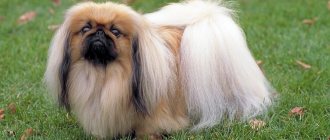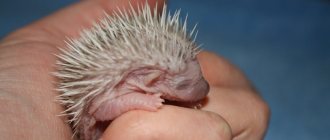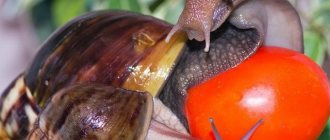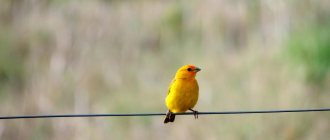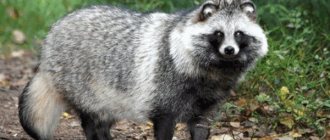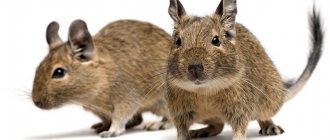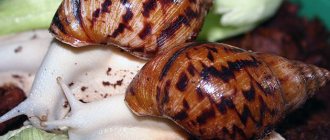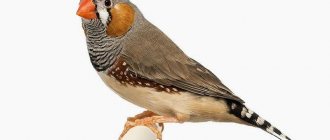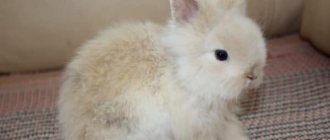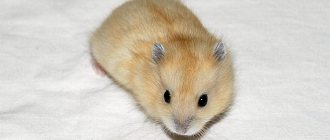When getting an animal at home, some owners do not take into account the fact that the pet needs to regularly devote time to care. Future owners of the toy terrier need to be prepared to regularly carry out the following procedures:
- Cleaning eyes and ears;
- Bathing and combing wool;
- Brushing teeth, trimming nails;
The toy terrier also needs:
- Special place;
- Regular walks and clothing;
- Proper feeding;
- Quality toys.
Any pet requires a responsible attitude and careful care from its owners. The Toy Terrier, despite its tiny size - its weight does not exceed 3 kg, and its height - 25 cm, requires no less attention than large breeds. Toy terrier owners often compare this breed to small children, which makes caring for them a fun, easy process.
Caring for a toy terrier - diet
An important point in caring for toy terriers is feeding. The pet's diet must be properly formulated and balanced. There are three feeding schemes for toy terriers:
- Feeding with dry industrial food. You need to choose only premium food, which contains only natural ingredients, but it is worth considering that such food is very expensive;
- Feeding with natural food. Not to be confused with feeding from your table, which is contraindicated for dogs. Food must be specially prepared for pets, contain the required amount of minerals, vitamins, proteins, details about the diet here;
- Mixed feeding - dry food and natural food.
It must be remembered that an incorrect diet can cause the development of diseases of the pancreas, stomach, liver, as well as problems with bones, which are very fragile in that terrier.
Nutrition
For feeding, you can choose either ready-made dry or canned food, or prepare your dog’s food yourself. When a dog owner decides to buy industrial products for a pet, preference should be given to those types that are designed for miniature breed dogs.
Natural food for a toy terrier should consist of 2/3 meat (including offal). The diet should include dairy products and eggs. Porridge (mixed with meat) should alternate with boiled vegetables (also with meat). When feeding home-prepared food, you should think about fortifying the animal in the autumn and spring.
Adult dogs should receive food at least 2 times a day, and puppies up to 3-4 months old at least 4-5 times. The cleanliness of bowls is very important; if they are dirty, they can disrupt the dog’s gastrointestinal tract. It is advisable to change the water daily and wash the bowl after feeding.
Ear and eye care
In the question of how to care for a toy terrier, caring for the eyes and ears is considered an important aspect.
Your pet's ears should be cleaned regularly as they become dirty - a large amount of wax and dirt can lead to inflammation. You can only use cotton swabs for cleaning; it is better to avoid cotton swabs. The ears should also be examined for any unpleasant odor.
It is worth monitoring the position of the ears - in this terrier they should stand high, setting occurs at the age of 2-6 months. If necessary, adjustments and staging measures are carried out.
Eye hygiene consists of daily washing - you need to wipe your eyes with a cotton pad moistened with boiled water or chamomile decoction. When rinsing your eyes while grooming your toy terriers, you should remove any secretions. If increased tearing or pus or other unhealthy discharge is detected, you need to contact a veterinarian; you can read more about eye hygiene here.
Owner reviews
Anna
My toy terrier is already 3 years old and from this article I learned a lot about him. For example, these dogs are truly loyal to their owner and will always protect him. But for some reason my dog considers only me to be his owner. He also gets along with others, but most of all he is attached to me. I also like that he is friends with our cat and other dog, and always plays with the child. And he is also excellent as a caretaker in the apartment. As soon as strangers arrive, he barks, but at the command “friends” he becomes silent and tries to make friends. But when walking, it is better to keep him on a leash because he always tries to approach other dogs.
maria_lis
Dogs of this breed are very active and are not suitable for busy people. In principle, there is no need to bathe them. But I wash it about once every two to three months. Combs, combs, etc. they don’t need them, since they are a smooth-haired breed (there are also toys with hair on their ears, and then you need to scratch them a little).
Very frozen - even in summer they shake from the cold. Therefore, be sure to buy a couple of sweaters, down jackets, blouses, and T-shirts for your little animal. We have a whole wardrobe!
Also real bells! They bark at any sound! categorically not suitable for families with small children. In principle, there is nothing complicated in the content. It is not necessary to train these dogs, just for fun or for exhibitions.
But it was a little difficult with socialization. He rushed towards every dog with a wild bark. It seems like there’s nothing like that now, I’ve already grown up.
Very charming and beautiful dogs! It's a real treat to the eye) Their loyalty is top notch - they will never abandon their owner! Mine is not a step away from me, on all trips with us. But at the same time vindictive. He hated my mother when she scolded him (he stole the chicken from the table)…
I think everyone has a piece in their heart for these dogs. I never thought that toys were such kind, loyal dogs. My Charlie sends you all a fiery kiss.
Newpugovka
Looking through the advertisements, we chose a toy terrier. The only difficulty we had was potty training Bucks. So we didn’t succeed. We adopted a 2 month old puppy in October. Veterinarians do not recommend walking puppies of this breed in winter, so we started potty training, but without success. Our dog didn't want to do it right. Only in the spring, when we started walking him, the problem disappeared by itself. Knowing how easy it is for cats to toilet train, keeping a dog for the first six months was simply a nightmare for me. Therefore, I recommend getting a toy terrier in spring or summer. By the time it gets cold, he will have grown up and will be able to walk outside.
Now our toy has grown up, he began to understand a lot, we loved him with all our souls. And he is us!!!
Although he is small, he has all the manners of a big dog:
- He's loyal
- He protects his home and owner
- He loves children very much and does not bite them.
- He is affectionate to the point of madness
- He understands everything
Karishok
My little amigo is not only a faithful friend, a sensitive comrade, but also a brave warrior! Feeling that I don’t want to see anyone, this little one makes it clear in no uncertain terms that you are not welcome here! Of the advantages of this breed, I will appreciate, first of all, that keeping such a dog is no more expensive than other breeds, it eats little and is practically omnivorous, does not require daily walking, gets along well with cats, lifts the mood with its games, is very sensitive to mood, is not intrusive, but it also has a very LOUD BARK, which on the other hand can be a minus, since at three o’clock in the morning I’m usually not ready for such a sound siren, but you always know who’s behind the door, yours or strangers, and probably the fact that it’s not frost-resistant).
The price is different and depends on the parents, affiliation, pedigree and physical characteristics, if just for the home is enough so that the dog does not grow up to be an elephant and is healthy! I will also note that it is not uncommon to find males with cryptorchidism and therefore it is more advisable to take a male with already released testicles (also remember that you cannot breed a male dog at once and then start marking, the best option is still to castrate, unless of course you have him for breeding). Unfortunately, I was unlucky; one thing didn’t work out for us, but still this faithful friend became part of my family, and part of his pack...
Belara444
Feeding. Our darling prefers straight food. She doesn’t even look in the direction of dry food or special canned food. He eats boiled beef, rabbit, buckwheat with vegetables, rice with meat. Favorite delicacies - dried lung, liver. Now we eat 4-5 times a day, as a puppy we ate 2-3 times. Weight 1810g.
Care. Caring for a dog will not be difficult if you do everything correctly and do not overdo it. We bathe the dog once every 2-3 weeks with a special shampoo for short-haired dogs. In the autumn-spring and summer, we bathe as it gets dirty. If this has to be done every day, we simply bathe with clean, warm water without shampoo. The most unpleasant procedure is brushing your teeth and cutting your nails (the dog starts biting and whining throughout the house and often breaks out). We trim the claws once a month with a special nail clipper, then go over them with a nail file to round off the sharp ends. We brush our teeth once a week using a special finger brush and toothpaste for dogs.
In the summer we often walked in nature and therefore used products against ticks and parasites. Once every three months we make sure to worm the baby and get all the prescribed vaccinations and tests.
Place and upbringing. We came across a smart girl, she sleeps in her house or on a mat, she knows a lot of commands: “sit”, “voice”, “lie down”, “crawl”, “quiet” “bring the ball”, “give the ball”, “look for a toy” ", "ask".
Problems . Toy terriers have very weak legs, so they should not be allowed to jump from heights; we often jumped off the sofa and then limped. We are not in heat yet and therefore have not yet encountered such a problem, but I have read that dogs during this period often become nervous, whine, can do their business throughout the house and often bite. We are also very cold, we freeze even at home, at a temperature of +20, so we wear special clothes at home and outside.
Well, in conclusion, I would like to note that the dog is not an acquired taste. She is very active, requires increased attention, loves to be caressed, licked, and play.
Video
Grooming and bathing
Caring for the toy terrier's coat involves regular brushing with natural brushes; you need to pay special attention to the area behind the ears, elbows, and chest. Long-haired representatives of the toy terrier need to be carefully combed during the molting period, and you should also not forget about haircuts; you can find out everything about hair care here.
The Toy Terrier is a breed that does not require frequent bathing. Veterinarians recommend bathing toy terriers once every six months; frequent bathing can lead to skin irritation and dandruff. You should use a special shampoo and conditioner, which can be purchased at a pet store.
Paws should be washed after every walk. You can also wipe the wool with a damp cloth after walking outside in the hot season; this procedure will help avoid the accumulation of dust on the wool.
Tooth and nail care
When purchasing a toy terrier, you should pay due attention to care and maintenance, especially dental hygiene - one of the weakest points of the breed. You need to brush your pet's teeth at least once a week using toothpaste for dogs. In the year that the terrier replaces its milk teeth with molars, if this does not happen, you should consult a veterinarian.
The terrier's nails begin to be trimmed from the age of ten days. After the first procedure, it must be carried out regularly - once every 10-20 days. For adult dogs, it is enough to trim their nails monthly; if this is not done, they will begin to break off, causing pain and bleeding.
You need to trim the part of the claw that is rounded with special nippers or a nail clipper; you can learn more about the procedure here (How to trim claws). If a dog walks on the asphalt for a long time during walks, then there is no need to trim its nails - they grind down on their own.
How to choose a toy terrier
The first step when buying a puppy is to ask the breeder to show him his mother. It would be useful to see the baby’s father, but most often the males are with other owners. When examining the mother, it is important to pay attention to whether she is a calm and balanced dog with a traditional anatomical build. If she begins to tremble, be afraid or show excessive aggression, then this indicates instability of her mental state, which can be transmitted at the genetic level. It is also worth paying attention to the behavior of the puppy itself. The Toy Terrier breed is distinguished by its activity and playfulness. As for external signs, the puppy should have shiny fur without visible bald patches. It is worth noting that a young toy terrier has several areas where skin can be visible, for example at the temples and in the chest area. It is important to keep your dog's ears and eyes clean. Any discharge in these areas indicates that the puppy is sick. The nose should be moist and slightly shiny.
When choosing a pet, it is recommended to pay attention to its teeth. A Toy Terrier should have the correct bite, even if it is only about a month old. It is important that the canines are not moved forward or backward. By 1.5 months of age, the puppy should have 12 primary incisors. When purchasing a toy terrier, you should also find out its pedigree, which is recorded in a special passport of its parents. After the first vaccinations, the puppy receives its own document certifying its basic veterinary indicators. Many diseases are widespread in small dogs, which can subsequently be transmitted to other animals and owners. Therefore, when choosing a pet, its veterinary passport is so important, which must indicate the vaccinations given to it, and then its pedigree.
How to care for a girl and a boy terrier - differences
In the question of how to care for a boy terrier, there are no obvious differences from caring for a girl terrier. The only difference is that the male toy terrier needs longer walks - at this time he marks the territory, and the female needs additional care during pregnancy.
In caring for the terrier, the owner must show patience and responsibility; if he is not ready or cannot pay proper attention to the dog, he should refuse to purchase this funny pet.
Interesting Facts
The Russian Toy Terrier has the following characteristics:
- Labile psyche, mobility, susceptibility to stress, and they also do not like children.
- The dog is picky about food.
- The dog cannot be left alone.
- It is recommended to purchase a dog for single people or families without children.
- Quite whimsical during maintenance and care.
- The dog cannot tolerate cold weather, so special clothing will be required.
- Despite its small stature, the dog is resilient, but if it falls, injuries and falls are possible. The dog often suffers from genetic diseases, pancreatitis, cataracts.
- It is necessary to protect the dog from communicating with large dogs, since the Russian Toy Terrier is quite friendly.
- The dog has a fairly loud and ringing bark.
breed has maintenance features that differ from larger dogs. But if the animal is treated correctly, the owners get a little faithful friend.
Video:
